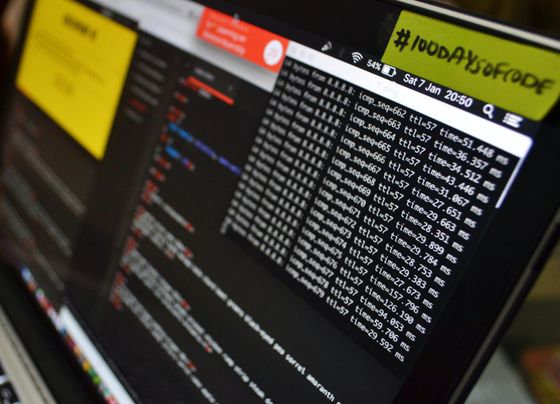Cyber Security Monitoring

Only continuous Cyber monitoring paired with periodic security scans can take your security detection and response capabilities to the next level.
Cyber monitoring is the process of continuously observing an IT system in order to detect data breaches, cyber threats, or other system vulnerabilities. It is a proactive cybersecurity practice that can help your IT team sift through cyber events to determine which ones may pose threats to your data or systems.
With cyber monitoring, foreign data is confirmed and monitored through business’ security protocols. Data may be stored in a local datacenter or through a cloud database. As data is collected and analyzed, suspicious behaviors are defined and will trigger alerts. Such alerts prompting to take any necessary security measures.
Cyber monitoring considers two main types of monitoring: endpoint monitoring and network monitoring.
Endpoint monitoring
Tracks the devices connected to a specific network in order to protect the network from the risks these devices pose. Any laptops, cell phones, tablets, desktop computers, and Internet of Things devices that are connected to your business network are considered endpoints and require monitoring.
Network Monitoring
Tracks and analyzes network activities in order to detect and respond to performance issues, which could indicate an intrusion or leave the network vulnerable to an attack. By incorporating diagnostic tools, applications, or appliances into your network monitoring, you can analyze security logs from these various components.
Cyber Security Scan

All an attacker needs is just one vulnerability to get a foothold in your network. A Cyber Security scan reveals the vulnerability of critical systems and sensitive information from digital attacks. Based on the outcome of such scans, cybersecurity measures are designed to combat threats against networked systems and applications, whether those threats originate from inside or outside of an organization.
Yearly or quarterly vulnerability scanning is no longer sufficient to detect risks in your IT system. You need a proactive, 24x7 continuous defense to stand a chance against the hackers incessantly probing your network. Continuous network scanning involves monitoring for intrusions around the clock to reduce the likelihood that your IT system will be breached by bad actors to steal sensitive data. It also requires automatic alerts and reports that uncover the defense posture of your network, while indicating which employees could be a weak link in your security chain.
A holistic continuous network scanning strategy contains four types of scans to conduct:
External Vulnerability Scans
Scans external IP addresses and domains, probing for vulnerabilities in internet-facing infrastructure to determine which ones can be exploited. Such scans are best used to verify the strength of your externally facing services. It helps identify weaknesses in your perimeter defenses, such as a firewall.
Internal Vulnerability Scans
Internal vulnerability scans are more complex than external ones, because there are simply more potentially vulnerable assets within your organization. This scan will discover and catalog your core IP-connected endpoints, such as laptops, servers, peripherals, IoT-enabled machines, and mobile devices. Performing internal scans on a regular basis is a proactive approach to protecting your network from known vulnerabilities and helps you gain useful insight into your patch management process.
Host-Based Agents
A host-based agent lives on the device itself and tracks active processes, applications, Wi-Fi networks, or USB devices that don't conform to company policies. It can then flag the user or IT team to fix the issue. Host-based agents monitor system activity for signs of suspicious behavior, including repeated failed login attempts, changes to the system registry, or backdoor installations.
Penetration Testing Tools
IT teams can go beyond passive scanning with penetration testing tools. In penetration testing, security experts (also known as ethical hackers) simulate how malicious hackers may attempt to infiltrate your network. These attacks help verify the effectiveness of your cybersecurity efforts, identify any potential weak spots, and test the human response capabilities of your security team and IT partners.
Endpoint Protection

Endpoint security solutions protect endpoints such as mobile devices, desktops, laptops and IoT devices. Endpoints are a popular attack vector, and the goal of an attacker is to not only compromise the endpoint but also to gain access to the network and the valuable assets within.
An endpoint security solution includes continuous monitoring, rapid time to detection, and architectural integrations. With threats continually increasing in sophistication and frequency, it is more important than ever to deploy an effective endpoint solution.
Endpoint security solutions take a cloud-based approach to endpoint security to instantly access the latest threat intelligence without requiring manual updates from security admins. This allows for faster and more automated responses. Cloud solutions offer scalability and flexibility and are much easier to integrate and manage. There is also less overhead since there is no infrastructure to maintain. Also the installation process is faster and simpler.
Consultancy Services

Due to the founders’ track records and their decades of experience by serving both large corporate and governmental sector, C3iSecure offers consultancy services in the specific areas of Access-control, Authentication and Encryption.
Access control is a fundamental component of data security that dictates who's allowed to access and use company information and resources. Who should access your company’s data? How do you make sure those who attempt access have actually been granted that access? Under which circumstances do you deny access to a user with access privileges?
Authentication is a technique used to verify that someone is who they claim to be. Authentication isn’t sufficient by itself to protect data, so what’s needed is an additional layer, authorization, which determines whether a user should be allowed to access the data or make the transaction they’re attempting.
Authentication factors can be classified into three groups:
1. Something you know
a password or personal identification number (PIN)
2. Something you have
a token, such as bank card
3. Something you are
biometrics, such as fingerprints and voice recognition.
Combining two or more of these authentication factors is an easy way to add a layer of protection.
Encryption is the security method of encoding data from plaintext to ciphertext, which can only be decrypted by the user with the encryption key. Encryption is the basic building block of data security. It is the simplest and most important way to ensure a computer system's information can't be stolen and read by someone who wants to use it for malicious purposes.
Data security encryption is widely used by individual users and large corporations to protect user information sent between a browser and a server. That information could include everything from payment data to personal information. Data encryption software, also known as an encryption algorithm or cipher, is used to develop an encryption scheme that theoretically can only be broken with large amounts of computing power.
Vulnerability Management

Digital transformation initiatives have become a common way for organizations to not only increase business agility, but also to adapt quickly to environmental forces, business priorities and market changes. Responses to COVID-19, for example, have massively accelerated the adoption of digital technologies by several years.
This shift toward digital transformation only increases the attack surface and the number of vulnerabilities your organization is exposed to, which threat actors are quick to exploit. There’s no disputing that unpatched vulnerabilities make systems easy prey.
With new vulnerabilities being discovered in increasing velocity and volume, scanning tools are returning hundreds, if not thousands–or tens of thousands–of vulnerabilities. It goes without saying that the prospect of quickly remediating every vulnerability identified by a scan is unfeasible. Overwhelmed and already stretched too thin to fix each one, most vulnerability management teams simply prioritize patching based on the CVSS severity levels.
Risk-based vulnerability management is a strategy for handling the myriad vulnerabilities on a typical enterprise network, according to the risk each individual vulnerability poses to an organization. At first blush, the concept of risk-based vulnerability management sounds relatively simple. But when most organizations are confronted with tens of thousands (or hundreds of thousands, or millions) of vulnerabilities, determining which pose the most risk to the organization is a significant undertaking. The key to risk-based vulnerability management – and the primary departure from the static, one-size-fits-all CVSS (Common Vulnerability Scoring System) score – is a comprehensive analysis of each vulnerability in its context on the network and in the current external threat environment.
Business Benefits of Vulnerability management:
- Genuinely reduce an organization’s risk of being breached as the result of an un-remediated vulnerability
- Effectively manage the overwhelming number of software vulnerabilities that are present on the typical enterprise network and new vulnerabilities that are published every day
- Improve team efficiency and simplify workflows
- Maximize the investment in existing security tools.
